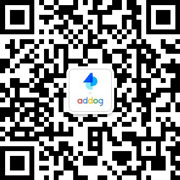本案例默认翻译为中文,点击可切换回原语言
已切换成原语言,点击可翻译成中文
福岛制造
案例简介:背景 2011年3月11日,一场海啸袭击了福岛第一核电站,引发了核反应堆的熔毁。在接下来的几天里,风雨把放射性物质带到了内陆。过去是日本最重要的农业地区之一,超过25,000公顷的农田受到污染。来自METER的环境技术专家与东京大学的Masaru Mizoguchi博士和NPO Fukushima Saisei共同开发了一种可持续的去污方法,使农民能够再次种植完全安全的水稻。数据证明大米是安全的,但没人买,因为人们不了解科学数据。 描述创意 (投票40%) 福岛制造是一本用福岛净化田地的稻草制成的书。通过将大米转化为媒介并将数据转化为理解,它可以帮助人们了解去污方法的工作原理以及福岛大米是安全的。为了讲述这个故事,这本书使用了广泛的资源: 摄影,访谈,报告,背景信息,数据及其可视化。 描述执行 (投票40%) 每本书包含296页,由福岛净化田地上种植的稻草制成。稻草被收获,干燥,清洁,切割并制成纸。纸张专家共同制作了独特的纸张,其中包含稻草的可见部分,而不会分散内容的注意力。这本书讲述了该地区,灾难和去污,农民及其产品的故事。它依赖于广泛的资源: 摄影,历史图像,访谈,报告,诗歌,科学论文,但最重要的是: 数据,通过不同的技术可视化。从封面到信息图表,甚至是日本装订内页的照片,这些照片被用来显示照片拍摄地点的辐射。所有这些都以一种独特而连贯的美学,将传统日本与现代设计相结合。一些可视化和所有内页都是通过处理数据设计的。 列出结果 (投票20%) 制作了两年多的时间,福岛制造2019年出版,第一版为1000册。书籍被发送给环境和食品行业的决策者,METER可以通过其其他产品访问这些行业。在此和PR中,创建了许多对话和数百万个联系人-以及新业务: 福岛大米的价格正在上涨,福岛及其他地区的更多农民和组织正在使用可持续的去污方法。
福岛制造
案例简介:Background On March 11, 2011, a tsunami hit the Fukushima Daiichi Power Plant, triggering the meltdown of the nuclear reactors. In the following days, wind and rain carried the radioactive material inland. More than 25,000 hectares of farmland, in what used to be one of Japan’s most important agricultural regions, were contaminated. Environmental technology specialists from METER, together with Dr. Masaru Mizoguchi from The University of Tokyo and the NPO Fukushima Saisei, have developed a sustainable decontamination method that allows farmers to grow perfectly safe rice again. The data proves that the rice is safe, but no one buys it, because people don’t understand scientific data. Describe the creative idea (40% of vote) Made in Fukushima is a book made out of rice straw from the decontaminated fields in Fukushima. It helps people understand that the decontamination method works and that the rice from Fukushima is safe, by turning the rice into the medium and the data into understanding. To tell the story, the book uses a wide range of resources: photography, interviews, reports, background information, data and its visualization. Describe the execution (40% of vote) Each book contains 296 pages, made out of the rice straw grown on decontaminated fields in Fukushima. The rice straw was harvested, dried, cleaned, cut and crafted into paper. Paper experts worked together to produce unique paper that contains a visible part of rice straw without distracting from the content. The book tells the story of the region, the disaster and the decontamination, the farmers and their products. It relies on a wide range of resources: photography, historical images, interviews, reports, poetry, scientific papers, but most importantly: data, visualized through different techniques. From the cover to infographics, and even the Japanese binding inside pages of pages with photography, which were used to show the radiation at the locations the photos were taken. All in a distinctive and coherent aesthetic that combines traditional Japanese with modern design. Some visualizations and all inside pages were designed with data through processing. List the results (20% of vote) More than two years in the making, Made in Fukushima was published in 2019 with a first edition of 1000 copies. Books were sent to decision makers in the environment and food industries to which METER has access through their other products. From this and PR, many conversations and millions of contacts were created – as well as new business: The price of Fukushima rice is on the rise, and the sustainable decontamination method is being used by more farmers and organizations in Fukushima and beyond.
Made in Fukushima
案例简介:背景 2011年3月11日,一场海啸袭击了福岛第一核电站,引发了核反应堆的熔毁。在接下来的几天里,风雨把放射性物质带到了内陆。过去是日本最重要的农业地区之一,超过25,000公顷的农田受到污染。来自METER的环境技术专家与东京大学的Masaru Mizoguchi博士和NPO Fukushima Saisei共同开发了一种可持续的去污方法,使农民能够再次种植完全安全的水稻。数据证明大米是安全的,但没人买,因为人们不了解科学数据。 描述创意 (投票40%) 福岛制造是一本用福岛净化田地的稻草制成的书。通过将大米转化为媒介并将数据转化为理解,它可以帮助人们了解去污方法的工作原理以及福岛大米是安全的。为了讲述这个故事,这本书使用了广泛的资源: 摄影,访谈,报告,背景信息,数据及其可视化。 描述执行 (投票40%) 每本书包含296页,由福岛净化田地上种植的稻草制成。稻草被收获,干燥,清洁,切割并制成纸。纸张专家共同制作了独特的纸张,其中包含稻草的可见部分,而不会分散内容的注意力。这本书讲述了该地区,灾难和去污,农民及其产品的故事。它依赖于广泛的资源: 摄影,历史图像,访谈,报告,诗歌,科学论文,但最重要的是: 数据,通过不同的技术可视化。从封面到信息图表,甚至是日本装订内页的照片,这些照片被用来显示照片拍摄地点的辐射。所有这些都以一种独特而连贯的美学,将传统日本与现代设计相结合。一些可视化和所有内页都是通过处理数据设计的。 列出结果 (投票20%) 制作了两年多的时间,福岛制造2019年出版,第一版为1000册。书籍被发送给环境和食品行业的决策者,METER可以通过其其他产品访问这些行业。在此和PR中,创建了许多对话和数百万个联系人-以及新业务: 福岛大米的价格正在上涨,福岛及其他地区的更多农民和组织正在使用可持续的去污方法。
Made in Fukushima
案例简介:Background On March 11, 2011, a tsunami hit the Fukushima Daiichi Power Plant, triggering the meltdown of the nuclear reactors. In the following days, wind and rain carried the radioactive material inland. More than 25,000 hectares of farmland, in what used to be one of Japan’s most important agricultural regions, were contaminated. Environmental technology specialists from METER, together with Dr. Masaru Mizoguchi from The University of Tokyo and the NPO Fukushima Saisei, have developed a sustainable decontamination method that allows farmers to grow perfectly safe rice again. The data proves that the rice is safe, but no one buys it, because people don’t understand scientific data. Describe the creative idea (40% of vote) Made in Fukushima is a book made out of rice straw from the decontaminated fields in Fukushima. It helps people understand that the decontamination method works and that the rice from Fukushima is safe, by turning the rice into the medium and the data into understanding. To tell the story, the book uses a wide range of resources: photography, interviews, reports, background information, data and its visualization. Describe the execution (40% of vote) Each book contains 296 pages, made out of the rice straw grown on decontaminated fields in Fukushima. The rice straw was harvested, dried, cleaned, cut and crafted into paper. Paper experts worked together to produce unique paper that contains a visible part of rice straw without distracting from the content. The book tells the story of the region, the disaster and the decontamination, the farmers and their products. It relies on a wide range of resources: photography, historical images, interviews, reports, poetry, scientific papers, but most importantly: data, visualized through different techniques. From the cover to infographics, and even the Japanese binding inside pages of pages with photography, which were used to show the radiation at the locations the photos were taken. All in a distinctive and coherent aesthetic that combines traditional Japanese with modern design. Some visualizations and all inside pages were designed with data through processing. List the results (20% of vote) More than two years in the making, Made in Fukushima was published in 2019 with a first edition of 1000 copies. Books were sent to decision makers in the environment and food industries to which METER has access through their other products. From this and PR, many conversations and millions of contacts were created – as well as new business: The price of Fukushima rice is on the rise, and the sustainable decontamination method is being used by more farmers and organizations in Fukushima and beyond.
福岛制造
暂无简介
Made in Fukushima
暂无简介
基本信息
- 广告战役: #Meter Group Inc-设计与品牌-c314#
- 广告品牌: Meter Group Inc
- 发布日期: 2000
- 行业领域: 电器/办公
- 媒体类别: 海报/平面
- 广告语言: 英语
- 媒介平台: 网络
- 获得奖项:
暂无评分
已有{{caseInfo.tatolPeople}}人评分
创作者
案例详情
涵盖全球100万精选案例,涉及2800个行业,包含63000个品牌
热门节日97个,23个维度智能搜索
-

项目比稿
品类案例按时间展现,借鉴同品牌策略,比稿提案轻松中标
-

创意策划
任意搜索品牌关键词,脑洞创意策划1秒呈现
-

竞品调研
一键搜索竞品往年广告,一眼掌握对手市场定位
-

行业研究
热词查看洞悉爆点,抢占行业趋势红利
登录后查看全部案例信息
如果您是本案的创作者或参与者 可对信息进行完善







